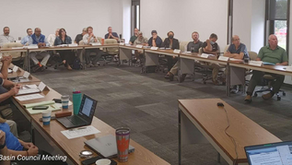Environmental Violations and Root Cause Analysis
- JD Solomon
- Nov 5, 2021
- 2 min read
Updated: Nov 18, 2021

Root Cause Analysis (RCA) applies to environmental issues in the same way RCA applies to equipment failures or business process failures. The main difference is that regulators are usually looking for a primary cause (or entity) that can be tagged with the violation. A recent review of a non-compliance event in my roles as a member of the North Carolina Environmental Management Commission reminded me that once again the fundamentals of RCA apply universally.
Seldom is there just one root cause. Yes, in regulatory affairs and criminal investigations we seek to bring the perpetrator to justice. But when looking at an event from the perspective of not repeating the same mistake twice, there is always more than one root cause that will improve future system performance.
There are many parts. Complexity means consisting of many parts. Systems are a collection of parts that produce an outcome that is superior to its individual parts. Specific to the environment, there are physical systems, biological systems, human systems, and monitoring (computer) systems that produce an outcome. The system may not be complicated (meaning difficult), but it is always complex (consisting of many parts). The challenge is understanding the cause-and-effect relationship of the distinct parts.
We need a standard approach. There are multiple approaches and tools that can be used in an RCA. Unfortunately, when it comes to environmental failures there is seldom a standard approach. That is partially because there are regulatory silos around sectors such as groundwater, surface water, air, and solid waste. It is also the result of a lack of training by the regulators who lead the investigations.
Everyone tends to blame the lowest level. It is easier – technically, procedurally, politically – to blame the person or equipment most close to the problem. However, RCA tells us that the root causes are usually deeper. We normally identify the symptoms and not the root causes when we attribute fault only to the easiest and obvious source.
The good news is that root cause analysis for environmental problems will improve with commitment, training, and standard approaches.
JD Solomon Inc. provides services at the nexus of the built and natural environments. Our straightforward, four-step FAST approach produces repeatable and defensible recommendations for making system improvements. Contact us for more information on environmental applications of our FAST approach for root cause analysis.




Comments